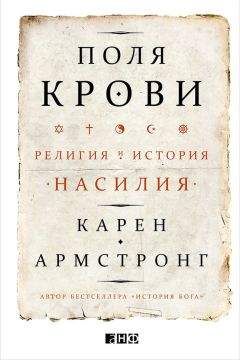39
O’Connell, Ride of Second Horseman, pp. 57–58
J. L. Angel, ‘Paleoecology, Pleodeography and Health’, in S. Polgar, ed., Population, Ecology and Social Evolution (The Hague, 1975); David Rindos, The Origins of Agriculture: An Evolutionary Perspective (Orlando, Fla., 1984), pp. 186–87
E. O. James, The Ancient Gods: The History and Diffusion of Religion in the Ancient Near East and the Eastern Mediterranean (London, 1960), p. 89; S. H. Hooke, Middle Eastern Mythology: From the Assyrians to the Hebrews (Harmondsworth, UK, 1963), p. 83
K. W. Kenyon, Digging up Jericho: The Results of the Jericho Excavations, 1953–1956 (New York, 1957)
Jacob Bronowski, The Ascent of Man (Boston, 1973), pp. 86–88; J. Mellaert, ‘Early Urban Communities in the Near East, 9000 to 3400 BCE’, in P. Mooney, ed., The Origins of Civilization (Oxford, 1979), pp. 22–25; P. Dorell, ‘The Uniqueness of Jericho’, in R. Morrey & P. Parr, eds, Archaeology in the Levant: Essays for Kathleen Kenyon (Warminster, UK, 1978)
Robert Eisen, The Peace and Violence of Judaism: From the Bible to Modern Zionism (Oxford, 2011), p. 12
World Council of Churches, Violence, Nonviolence, and the Struggle for Social Justice (Geneva, 1972), p. 6
Gerhard E. Lenski, Power and Privilege, pp. 105–14; O’Connell, Ride of Second Horseman, p. 28; E. O. Wilson, On Human Nature (Cambridge, Mass., 1978), p. 140; M. Ehrenburg, Women in Prehistory (London, 1989), p. 38
A. R. Radcliffe, The Andaman Islanders (New York, 1948), p. 43
Ibid., p. 177
John H. Kautsky, The Politics of the Aristocratic Empire, 2nd ed. (New Brunswick and London, 1997), p. 374
Ibid., p. 177
Keegan, History of Warfare, pp. 384–86; John Haldon, Warfare, State and Society in the Byzantine World (London and New York, 2005), pp. 10–11
Bruce Lincoln, ‘The Role of Religion in Achmenean Imperialism’, in Nicole Brisch, ed., Religion and Power: Divine Kingship in the Ancient World and Beyond (Chicago, 2008)
Cavanaugh, Myth of Religious Violence
Эпос о Гильгамеше, 1.2.26. Здесь и далее, за исключением оговоренных случаев, см.: английский перевод: Stephen Mitchell, trans., The Epic of Gilgamesh: A New English Version (New York, London, Toronto, Sydney, 2004). [Здесь и далее перевод И. Дьяконова. Цит. по изд.: Эпос о Гильгамеше («О все видавшем»). – СПб.: Наука, 2006. – Прим. пер.]
Ibid., 1.1.16–18
Ibid., 1.2.8–10
Древнейшие из сохранившихся текстов относятся к концу III тыс. до н. э. Старовавилонский эпос соединяет их в одном произведении (ок. 1700 г. до н. э.). Поэма Син-Леке (ок. 1200 г. до н. э.) представляет стандартный вариант, на котором основано большинство современных переводов
Эпос о Гильгамеше, 1.2.23. см.: перевод Митчелла и поправки в: Andrew George, trans., The Epic of Gilgamesh: The Babylonian Epic Poem in Akkadian and Sumerian (London, 1999)
George, Epic of Gilgamesh, p. xlvi
John Keegan, A History of Warfare (London, 1993), pp. 126–30; Robert L. O’Connell, Ride of the Second Horseman: The Birth and Death of War (New York and Oxford, 1995), pp. 88–89
R. M. Adams, Heartlands of Cities: Surveys of Ancient Settlements and Land Use on the Central Floodplains of the Euphrates (Chicago, 1981), pp. 60, 244; William H. McNeill, Plagues and People (London, 1994), p. 47
McNeill, Plagues and People, pp. 54–55
Gerhard E. Lenski, Power and Privilege: A Theory of Social Stratification (Chapel Hill and London, 1966), p. 228
A. L. Oppenheim, Ancient Mesopotamia: Portrait of a Dead Civilization (Chicago, 1977), pp. 82–83; O’Connell, Ride of Second Horseman, pp. 93–95
Samuel N. Kramer, Sumerian Mythology: A Study of the Spiritual and Literary Achievement of the Third Millennium BC (Philadelphia, 1944), p. 118. [Цит. по изд.: Крамер С. История начинается в Шумере. – М.: Наука, 1965. – Прим. пер.]
Ibid., с. 145. [Цит. по изд.: Крамер С. История начинается в Шумере. – М.: Наука, 1965. – Прим. пер.]
Gottwald, The Politics of Ancient Israel (Louisville, 2001), pp. 118–19
O’Connell, Ride of Second Horseman, pp. 91–92
Georges Dumézil, The Destiny of the Warrior, trans. Alf Hiltebeitel (Chicago and London, 1969), p. 3
Thorkild Jacobsen, ‘The Cosmos as State’, in H. and H. A. Frankfort, eds, The Intellectual Adventure of Ancient Man: An Essay on Speculative Thought in the Ancient Near East (Chicago, 1946), pp. 148–51
Эпос о Гильгамеше, 1.2.1
Более подробно об этом см.: мою книгу: Армстронг К. Краткая история мифа. – М.: Открытый мир, 2005.
Jacobsen, ‘Cosmos as State’, pp. 145–48; 186–97; George, Epic of Gilgamesh, pp. xxxvii – xxxviii
Jacobsen, ‘Cosmos as State’, pp. 186–91; Tammi J. Schneider, An Introduction to Ancient Mesopotamian Religion (Grand Rapids, Mich. & Cambridge, UK, 2011), pp. 66–79; George, Epic of Gilgamesh, pp. xxxviii – xxxix
Schneider, Introduction, p. 5; Jacobsen, ‘Cosmos as State’ p. 203
John Kautsky, The Politics of Aristocratic Empire, 2nd. ed., pp. 15–16; 107
Thomas Merton, Faith and Violence (Notre Dame, Ind., 1968), pp. 7–8
Walter Benjamin, ‘Theses on the Philosophy of History’, in Illuminations (London, 1999), p. 248
Max Weber, The Theory of Social and Economic Organization, trans. A. M. Henderson & Talcott Parsons (New York, 1947), pp. 341–48
Эпос о Гильгамеше, 1.2.24–26
Сказание об Атрахасисе, 1.1. Здесь и далее см.: английский перевод в: Stephanie Dalley, Myths from Mesopotamia: Creation, the Flood, Gilgamesh, and Others (Oxford and New York, 1989), p. 10. [Здесь и далее перевод В. Афанасьевой. Цит. по изд.: Я открою тебе сокровенное слово: литература Вавилонии и Ассирии / Сост. В. Афанасьева и И. Дьяконова. – М.: Художественная литература, 1981. – Прим. пер.]
Ibid., 1.38–39
Ibid., 1.146–149
Ibid., 1.177–179
Ibid., 1.180
Ibid. 2.5.16–18. (Армстронг соединяет два эпизода – чумы и голода: по наступленье третьего года черты людей исказил голод. По наступленье четвертого года короткими стали их длинные ноги. – Прим. пер.)
Ibid., 3.7
W. G. Lambert & A. R. Millard, Atra-Hasis: The Babylonian Story of the Flood (Oxford, 1969), pp. 31–39.
Schneider, Ancient Mesopotamian Religion, p. 45
Keegan, History of Warfare, p. 128
Эпос о Гильгамеше, 3.26–27 (старовавилонская версия)
Ibid., 1.4.47.–1.5.3
Ibid., 3.1.19–20 (старовавилонская версия)
O’Connell, Ride of Second Horseman, pp. 96–97
A. L. Oppenheimer, ‘Trade in the Ancient Near East’, International Congress of Economic History, 5, 1976
Kautsky, Politics of Aristocratic Empires, p. 178
Thorstein Veblen, The Theory of the Leisure Class: An Economic Study of Institutions (Boston, 1973), pp. 41, 45; выделено мной. (Веблен Т. Теория праздного класса. – М.: Либроком, 2015.)
Ibid., p. 30
Эпос о Гильгамеше, 3.3.5–7 (старовавилонская версия)
Kautsky, Politics of Aristocratic Empires, pp. 170–72, 346
Эпос о Гильгамеше, 3.4.10, 13–15 (старовавилонская версия)
Ibid., 3.4.6–8, 23–25
Ibid., 3.2.10
Chris Hedges, War is a Force That Gives Us Meaning (New York, 2003), p. 21
Эпос о Гильгамеше, 5.31–32 (старовавилонская версия)
Ibid., 7.303–305
R. Cribb, Nomads and Archaeology (Cambridge, UK, 1999), pp. 18, 136, 215
O’Connell, Ride of Second Horseman, pp. 67–68
K. C. Chang, The Archaeology of Ancient China (New Haven, 1968), pp. 152–54
O’Connell, Ride of Second Horseman, pp. 77–78
Ibid.
Тацит. О происхождении германцев и местоположении Германии, 14 [Перевод А. Бобович. Цит. по изд.: Тацит К. Сочинения в двух томах. Т. 1. Анналы. Малые произведения. – Л.: Наука, 1969. – Прим. пер.]. см.: Kautsky, Politics of Aristocratic Empires, p. 178
Veblen, Theory of the Leisure Class, p. 45
Bruce Lincoln, ‘Indo-European Religions: An Introduction’, in Death, War and Sacrifice: Studies in Ideology and Practice (Chicago and London, 1991), pp. 1–10
Mary Boyce, ‘Priests, Cattle and Men’, Bulletin of the School of Oriental and African Studies, 1988, pp. 508–26.
См., напр., зороастрийский богослужебный текст Ясна 30:7c; 32; 49: 4b; 50: 7a; 30: 106; 44: 4d; 51:96; Bruce Lincoln, ‘Warriors and Non-Herdsmen: A Response to Mary Boyce’, in Death, War and Sacrifice, pp. 147–60
Lincoln, ‘Indo-European Religions’, pp. 10–13
Ibid., p. 12
Bruce Lincoln, ‘War and Warriors: An Overview’, in Death, War and Sacrifice, pp. 138–40
Гомер, Илиада XII 310–315. см.: английский перевод: Richard Lattimore, The Iliad of Homer (Chicago and London, 1951). [Перевод Н. Гнедича. Здесь и далее цит. по: Гомер. Илиада. – М.: Правда, 1984. – Прим. пер.]




